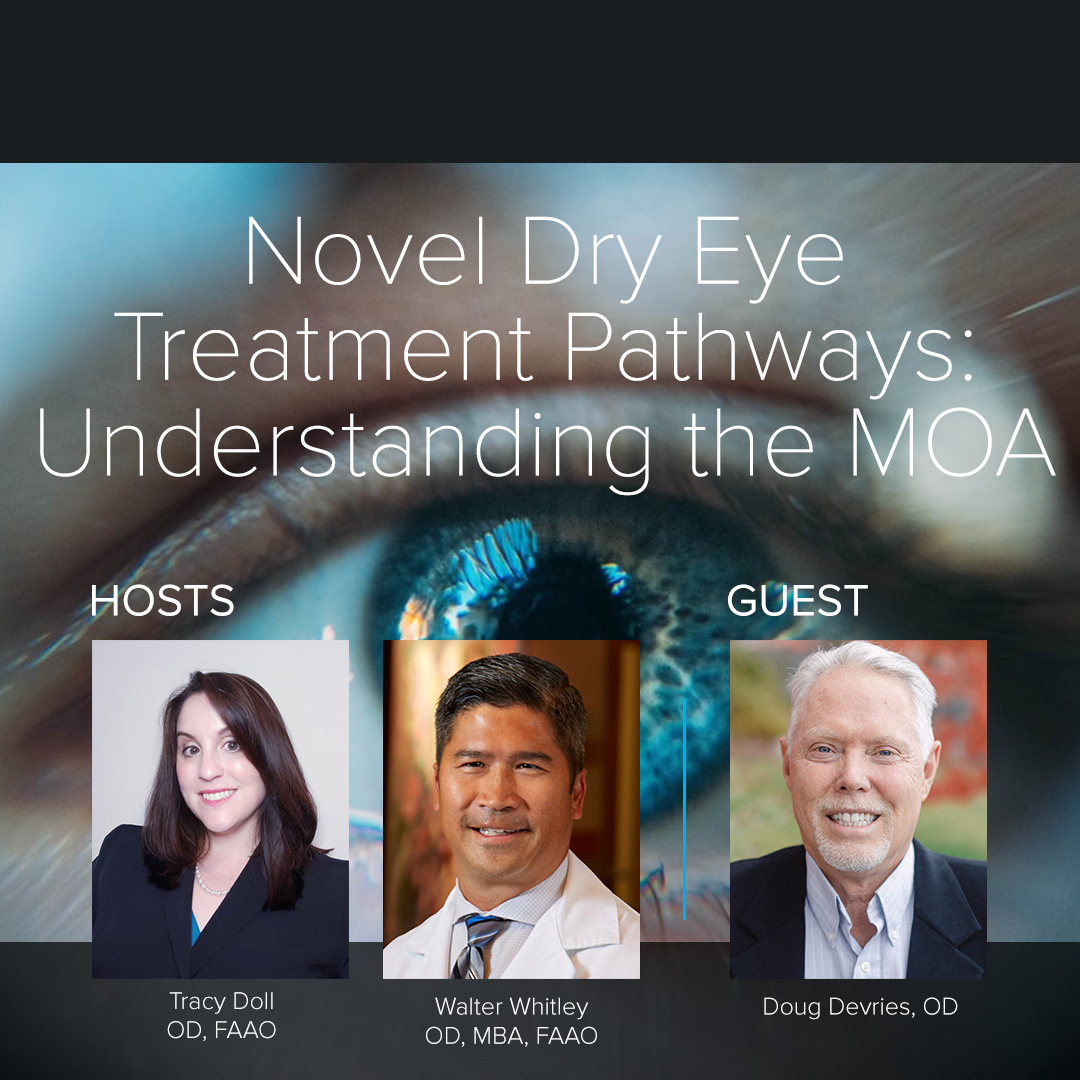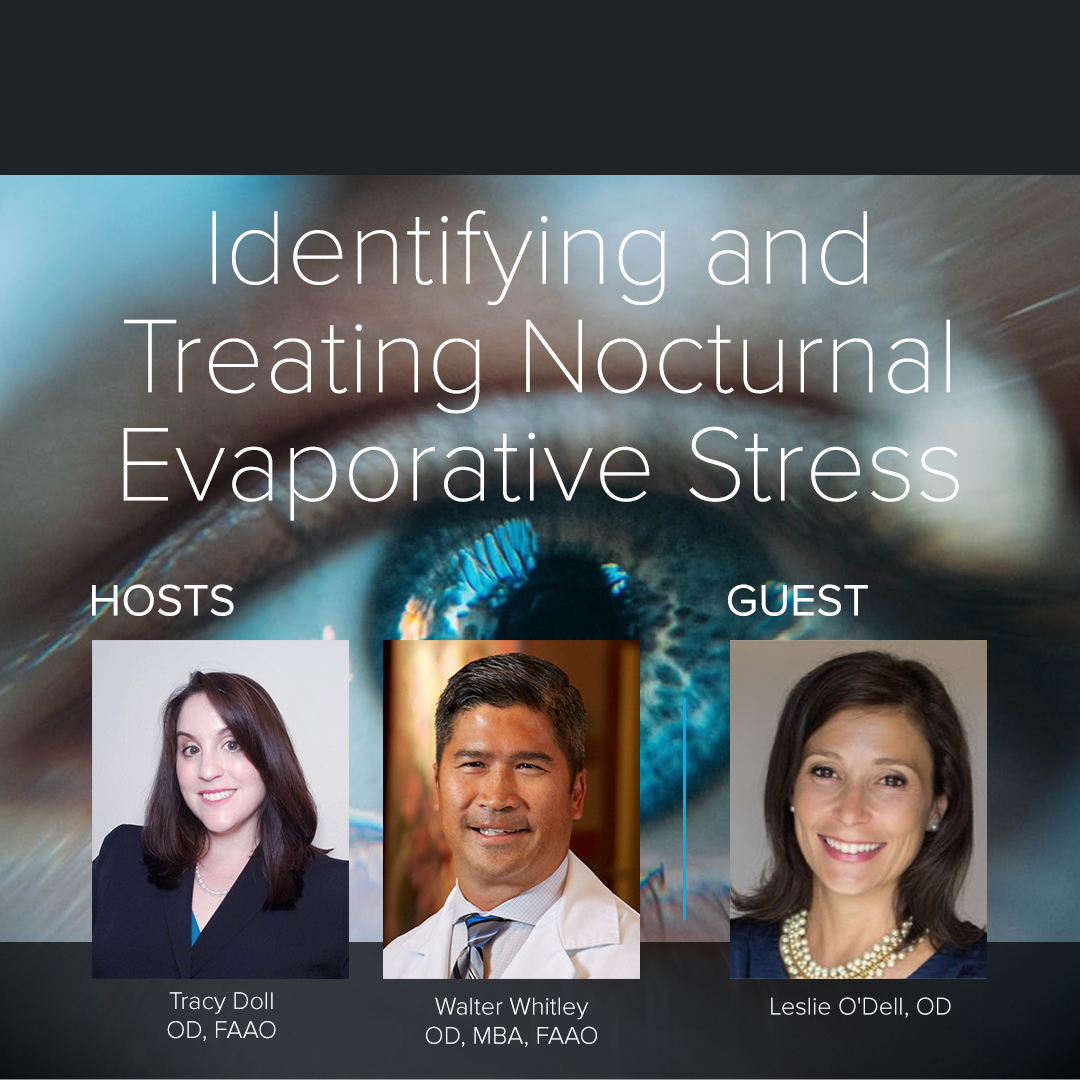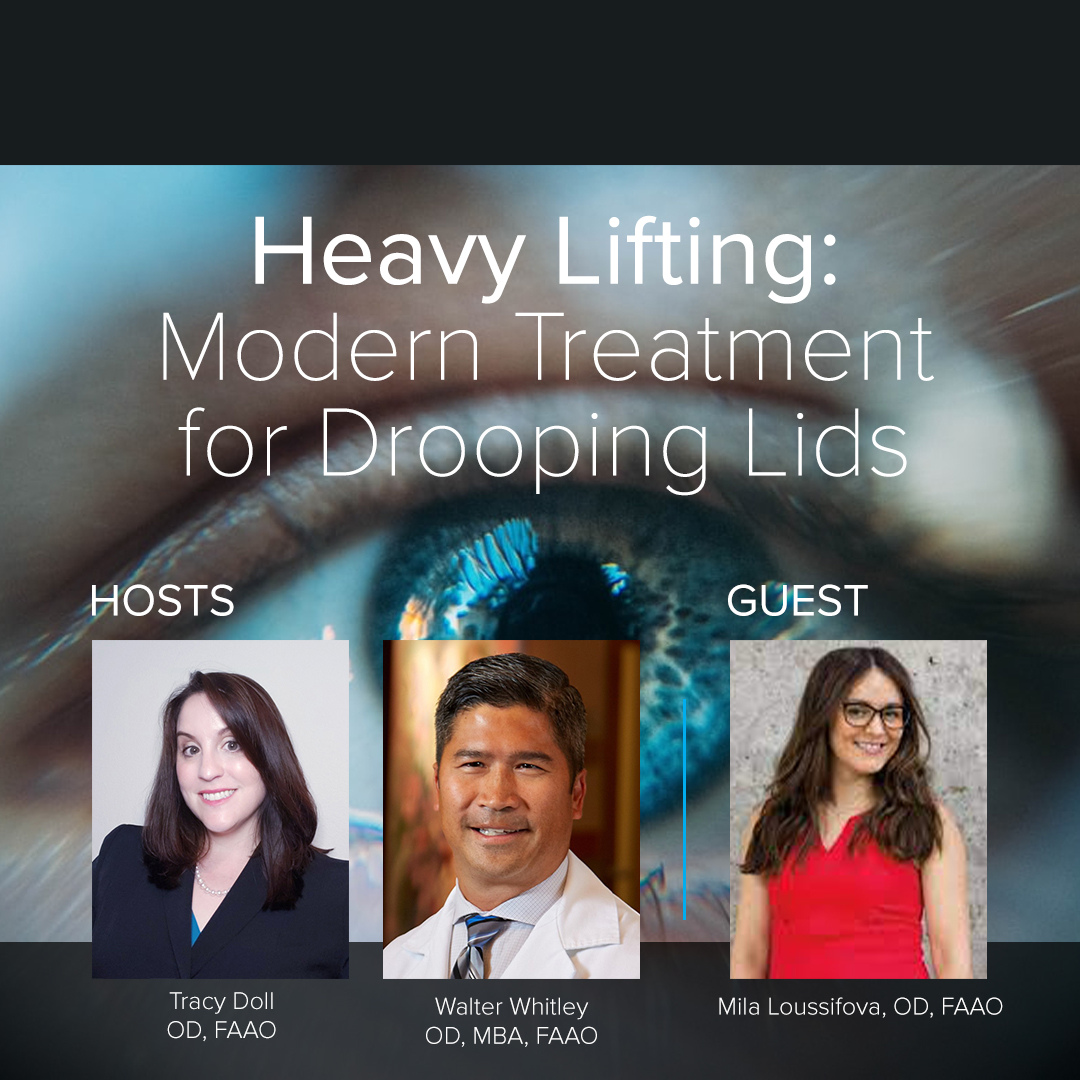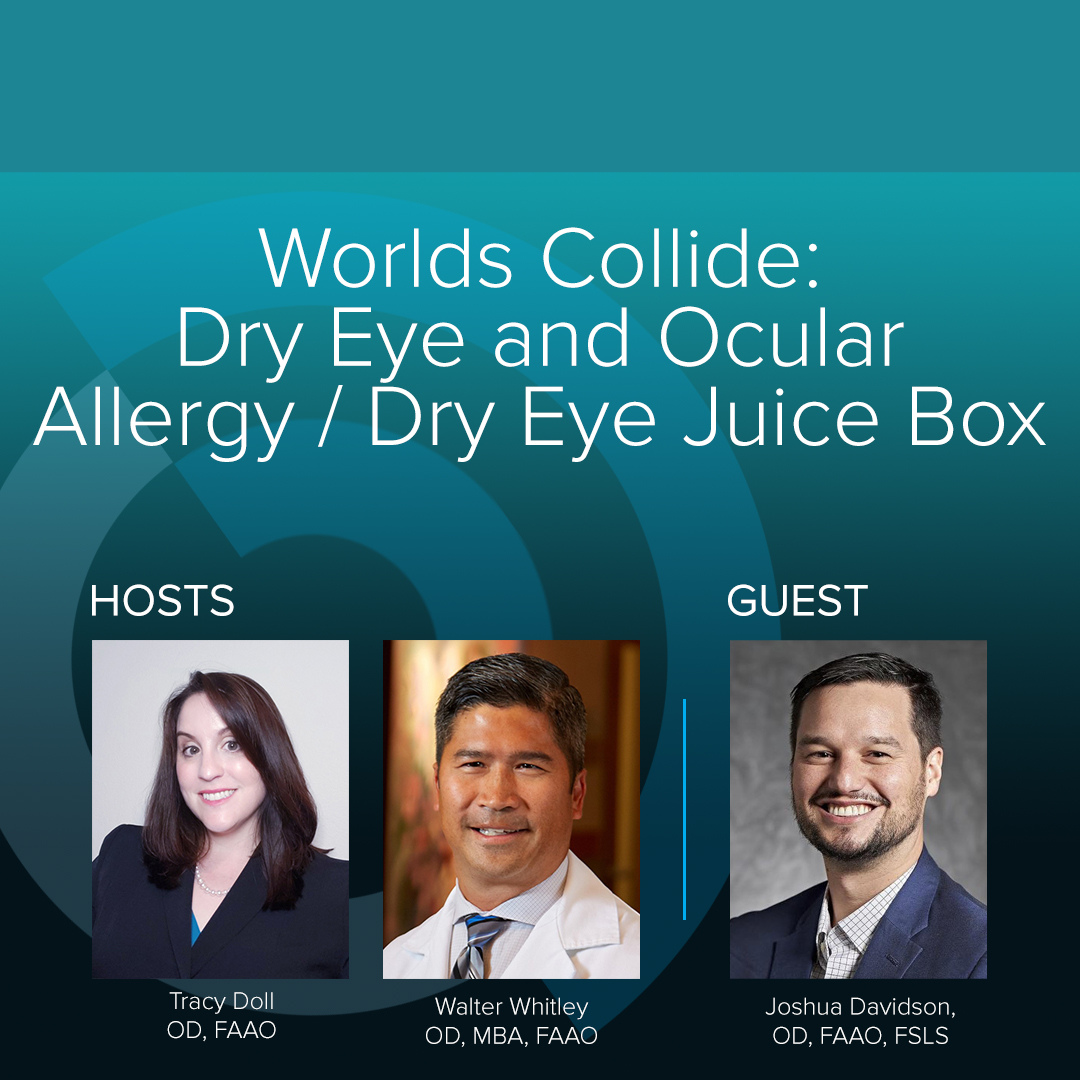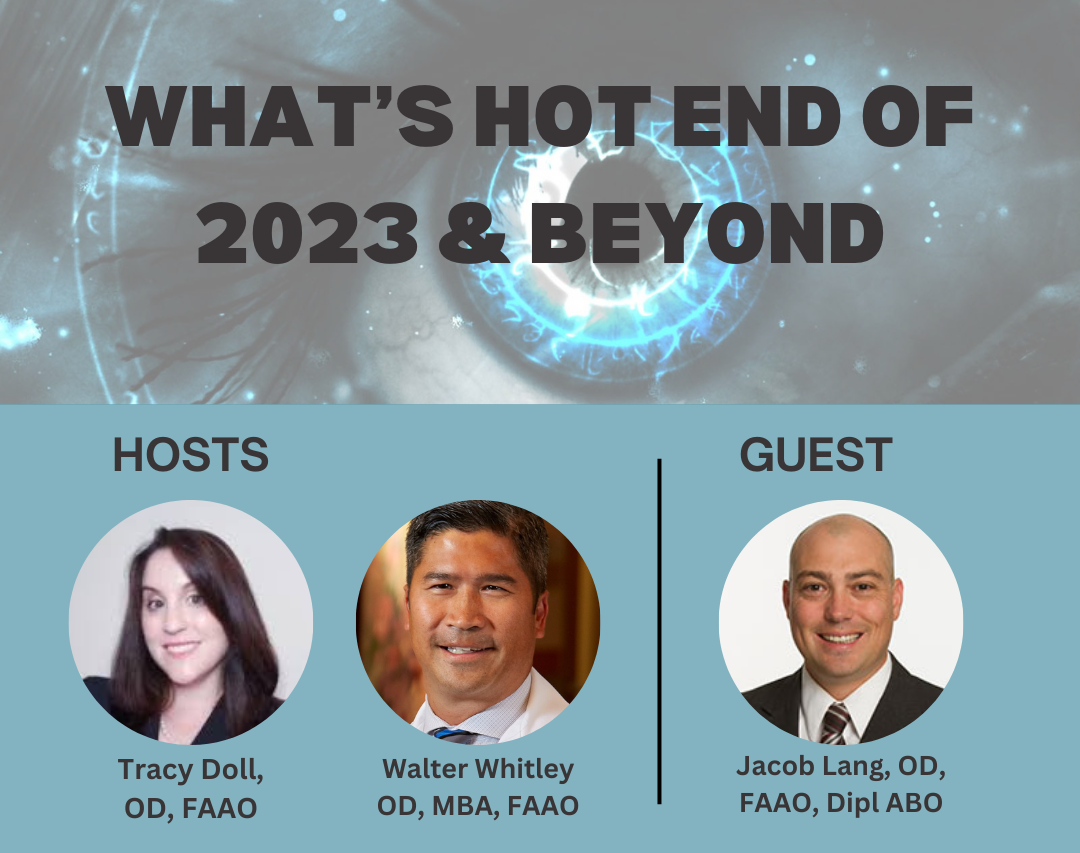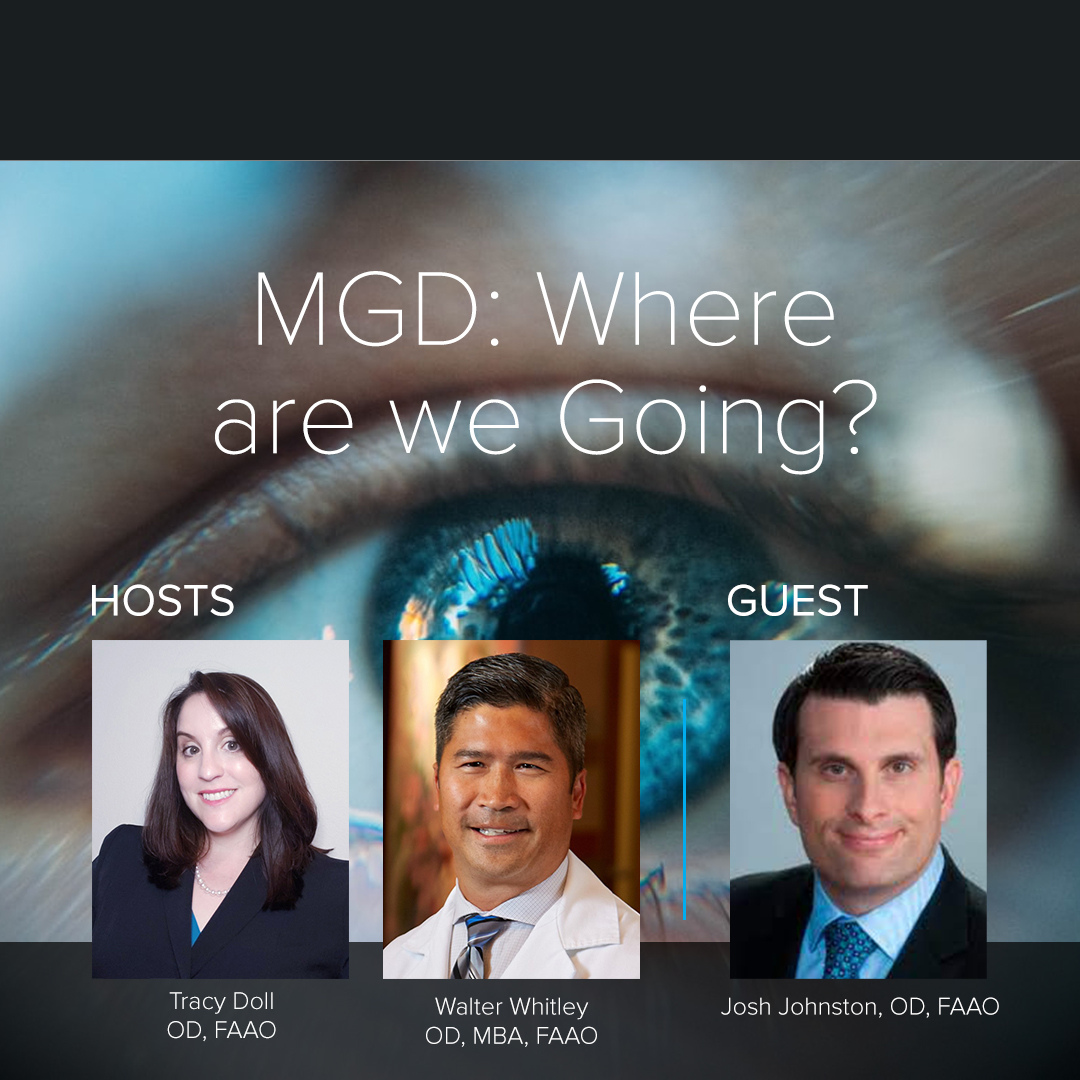Episode Transcript
[00:00:00] Speaker A: Welcome to the Dry Eye podcast series. Click on Dry Eye, your insider path to the most exclusive dry Eye topics. The series will raise awareness about the current and future state of ocular surface disease. The podcasts will focus on a variety of topics. Before we get to our next episode, here's a quick word from our sponsor.
[00:00:19] Speaker B: As a global specialized company dedicated to ophthalmics, Santen brings a 130 year history of scientific knowledge and organizational capabilities to research, development, and commercialization of pharmaceuticals, surgical and medical devices, and OTCI care products.
Santon is the market leader for prescription ophthalmic pharmaceuticals in Japan, and its products now reach patients in more than 60 countries. Santon provides products and services to contribute to the well being of patients, their loved ones, and consequently, to society.
[00:00:54] Speaker C: In today's episode, we have the pleasure of speaking with one of my partners and mentor, Doug Devries, who practices in Sparks, Nevada, about novel dry eye treatment pathways. Welcome, Doug.
[00:01:05] Speaker D: Thank you, Walt.
[00:01:06] Speaker C: Doug, I know about your practice, but maybe everybody on here does not know about your practice. So actually, can you tell them about our practice?
[00:01:14] Speaker D: Yes, I will. I'll tell about our practice. It is a 30 year old referral practice that was initially started to support the needs of the optometric community. So we do a lot of surgery we have done and we see a lot of medical patients as well.
And one of the things that has happened specifically to my practice is because of the over just this huge demand for dry eye patients and involved in surgery, that now I limit most of my practice to really treating ocular surface conditions that are surrounding surgical, post surgical, or just referrals from the general optometric and ophthalmology community.
[00:02:01] Speaker A: So why is dry so important to your practice? Would you say it's just naturally grown out of this co management?
[00:02:08] Speaker D: Well, yeah, it is, because I think as we started to learn more and more, and what really, I think put it over the edge was with the Lasik boom and creating flaps. And we were seeing so many patients that then had this, you know, that four weeks after, six weeks after they developed this dryness. And so my partner came to me all these years ago and said, you know, this whole thing with dry eye and whether it's post cataract or pre cataract or post LasiK prelacic, you know, we have to figure that out. And he said, by we I mean you because I'm going to stay in the operating room.
[00:02:46] Speaker A: So there's been a lot of changes over the past two decades, and it's been amazing that you're one of these people that's been on the forefront. I mean, you're one of my personal heroes. Can you discuss the mechanism of action for some of the newer treatment options that are out now that differ from what we used to do?
[00:03:02] Speaker D: Well, yeah, let's go back to 20 years ago, and we had punctual plugs and artificial tears, and that was it. I mean, that's what we counted on, actually. Doug, dry eye treatment.
[00:03:12] Speaker C: We had baby shampoo. I didn't mean to interrupt, but go ahead.
[00:03:15] Speaker D: Baby shampoo. Yeah, we had baby shampoo. Again, more inflammation.
So as we look at mechanisms of actions and what they happen, I mean, certainly the first one that came out where we actually had a therapeutic dedicated because we had some steroids, but steroids weren't widely used at that particular time because it really wasn't known about inflammation like we know at this point. So when cyclosporine was introduced in, gosh, 2003, it was really to help suppress those t cells, to kind of break that cycle of inflammation. And it just took a little bit longer. And we had to really encourage our patients to stick with the treatment because we weren't going to get immediate gratification. I think that was one of the problems is both practitioners as well as patients didn't get that immediate gratification, like you would say, with a bacterial infection and antibiotic. And so you had just a tremendous amount of dropout. And I think from that, it just kind of tainted things. And then, as you know, fast forward to a few more years, we start realizing a lot more the idea. And a lot of us were using steroids in conjunction with cyclosporine. But then when lofitocrats came out and we really found that an LFA one antagonist, where we could surround that t cell and keep that from docking with the icams and the LFA one s, that was really something that brought about faster treatment. So again, I think it renewed the interest at that particular time. So, yeah, mechanism of action has really advanced, and our understanding has advanced with that as well.
Then, as you continue on with the new mechanisms of action that we see now, say with tearvaya, with the nasal spray and actually stimulating the ophthalmic branch of the trigeminal nerve nasally with a nasal spray, again, a completely different novel mechanism of action. And I think that then, as you see other refinements with mechanism of action, you also have to include mechanism of delivery. And that's when, you know, as we look at something like sun releasing another cyclosporine that was in a higher concentration, but a nanomycellular to get better penetration. So now, all of a sudden, you have over three times greater going to the surface. So, you know, I think mechanism of action has really been something that should encourage most of us. You know, if you're not treating it, jump back in. Or if you had less and stellar results in the past, jump back in and try to see some of those. Those results you get with both different mechanism of action and mechanism of delivery.
[00:05:59] Speaker C: Hey, Doug, you mentioned tear via, and that is definitely a novel treatment and mechanism of action. How's that been working for you? And what have you been telling your patients about it?
[00:06:10] Speaker D: Well, exactly that, Walt. I've been telling my patients that this is a novel mechanism of delivery as well as a mechanism of action, and explaining how that ophthalmic branch of the trigeminal nerve, which has the terminal ends in the nasal passageway, can be stimulated to create a full complement here. What I found more than anything is interest. Patients are interested rather than a drop, that they're interested in different, different ways to be able to treat that. Too early, really, to tell, but, I mean, I have a lot of prescriptions out there, and some of it you judge by, on their sample, do they actually fill it? Then you have to differentiate. If they didn't fill it, was it due to a cost because they didn't have access, or was it that they didn't find it successful? So I think in the next month, as you start to see some of these patients come back, we're going to have a lot better idea on exactly how that's playing out with patient. But I'd say tremendous amount of interest by patient and a willingness to try it.
[00:07:14] Speaker A: So with so many pharmaceuticals in the water and so many options now, which we have, that's amazing. How do you choose which one's the right fit for your patient?
[00:07:23] Speaker D: Yeah, great question. And I think that causes a lot of confusion. I mean, if I see a patient that has been on chronic artificial tears or they've been trying two or three more tears, I'm going to go to a therapeutic. First of all, I'm going to jump in, and that doesn't mean that I'm also not going to talk about doing something for the lids and that we're going to have to do something to improve it. But remember, all of these, that we're dealing with the lids and we're dealing with inflammation. It's as a result of what that inflammation has caused, say those meibomian glands, say the pek on the cornea.
I will take a look and say, okay, depending on the level, I might add a steroid, something like isuvis, which works very well, which is, again, a different formulation. I mean, it's the same molecule, lotopredanol, but the difference is in the mechanism of delivery. So, you know, you have that mucus penetrating particle that grabs, that goes through the mucus, and again, have over three times the penetration to the target tissue. But that's how. I mean, I know I'm gonna use a therapeutic. I wanna find out what they're gonna. The patient's gonna have access to. I mean, I certainly have preferences of where I'd like to start. I want fast acting. I want the patient to recognize some improvement as soon as possible, because at that way, they're pushing you along instead of you trying to pull them along.
[00:08:46] Speaker A: Yeah, it's a lot easier to give a high five than it is to have to pull out your cheerleading pom poms. That's absolutely true.
[00:08:52] Speaker D: Absolutely. Absolutely. And our patients get that. And I think that's why when we look at something like lofitograph, that in half of the clinical style, clinical trials, that in two weeks, they showed statistically significant improvement in symptoms. That's great news. As opposed to just keep dragging that out to the patient until they get results. But at the same time, when you're using something like a cyclosporine versus a lofitagras, remember different mechanisms of action, and so there's no reason that they can't be combined. There's no reason. I mean, if you have a patient with systemic hypertension, it's not unusual at all to see them on two or three systemic hypertension meds. And for some reason, insurance companies just kind of put us in a box and say, oh, no, you get one and only one. Well, it's not true. I mean, if they had the different mechanisms of action and getting a synergistic effect, I don't hesitate. And I probably have about 20% of my patients that are on both a cyclosporine as an immunosuppressive and an alpha one antagonist in lifidogris. And then would you add a third one with a steroid? Absolutely. It depends on how well you're controlling those symptoms.
[00:10:03] Speaker C: We do have so many options out there, and we've all had this question. I know the three of us from colleagues say, you know, are you a lifidograss guy? You're the cyclosporid guy. You know, one of the things that you just mentioned Doug was the delivery systems. And so you mentioned CEQA. We know about restasis, 0.05%, you know, so how do you make that decision between the two? Or is it going to be more of an insurance making that decision for you?
[00:10:28] Speaker D: Yes.
Not to be sarcastic, but yeah, no, I have preferences. I want fast acting, and yet I tell patients, and I think you have to be comfortable with side effects. You have to be comfortable with advising your patients what to expect and creating those expectations.
But you also have to be, you have to be nimble in that you can't always get exactly what you want. But, you know, I've, in a recent education that I did is that there's not a wrong way to treat unless it's doing nothing, and that's wrong. But if you're doing something and if you're going, if you like lofitagrass and you say, hey, I want the fastest response, I'm gonna deal with the taste, I'm gonna deal with the side effect, then you go for it and you explain the patient. This is your first choice. If you like the fact that the 0.09% cyclosporine and the nanomocellular formulation on that, and again, you accept the expectations with the patient, then go for it and explain to them that if the insurance doesn't give them access, they're still going to get a drug that works. They're still going to have some. It's not like that's a failure at that point. It just may take a little bit longer. We may need to add some other treatment along the way, and you just need to be able to pivot a little bit with that. So I don't think in terms of absolutely being locked in. I would like to have initially one of the drugs that is going to get better penetration and is going to turn around symptoms faster. So in cequa or in lofetograph, but it doesn't mean that if all of a sudden they don't have access and now they're using restasis that I consider, well, that's a failure. That's not going to work because I have 18 years of experience with restasis working. Your job just becomes a little different as a provider at that point.
[00:12:23] Speaker C: Yeah. And so it mainly comes down to understanding all the different drugs and how they're utilized to set proper expectations for patients. All right, so now we're going to have fun with you and give you different case scenarios to show us and the listeners where the moa comes in. So the first one. Actually, Tracy, you can ask them the first one.
[00:12:45] Speaker A: So you have a new patient who presents with moderate signs and symptoms. Where do you start?
Moderate. They walk in the door.
They've been everywhere. Moderate signs and symptoms. They're coming to you because you're the guy.
[00:13:00] Speaker D: Okay. Where I'm going to start at that point, and we'll talk about different mechanisms of action as well, is I am going to. Unless there's a contraindication, they're going to be on an omega six, omega three, something like hydroi with gamma linoleic acid. But that's not going to be. I'm just not just going to leave them on that and give them time. That's just. I'm going to tell them you're going to be on that. If they have any lid involvement at all, I'm probably going to give them a commercially available warm compress, like with metabeeads, with root or compress, something like that. But they're also going to get a prescription for a therapeutic at that point. They are going to be prescribed a therapeutic, and we have a lot of options, if it's strictly where we're getting episodic and this patient isn't this chronic symptoms all the time. I'd probably go with an isuvis at that point.
Would I hesitate, if there was not coverage to go with a lifidogris or a sequa? Not at all, but they're going to get a therapeutic at that point. And now that we have the nasal spray, I mean, that's another one that can enter in. But I looked at as, is that going to be a primary? I'm going to get things under control as fast as I can because I just don't have the experience. But I wouldn't hesitate to add it in at some point as well.
[00:14:15] Speaker C: So I'm going to add something to that. So that same new patient was referred for cataract surgery with moderate signs and symptoms. So does that change anything?
[00:14:24] Speaker D: I mean, typically it would go with.
[00:14:25] Speaker C: A steroid, but I'm just.
[00:14:28] Speaker D: Yeah, I mean, it absolutely changed something because now we're trying to be expedient as possible in getting the best readings for that patient so that we can get them to surgery. You know, we don't want to have that delay too long. The patient gets frustrated. So, yeah, most likely at that point, I'm probably with that they're going to get a therapeutic, but I'm probably going to go to a lid procedure, if they have any evidence of MGD, to get them quickly to that I'll start them on something to take care of their inflammation, and it might be multiple drugs at that point, but I'm going to recommend a lid procedure pretty fast. And if they're surgical patients, I may not go through that.
The four sessions of the IPL, I might go right to the lid procedure, see if we can't get that meibumous really helping get some, some quality readings.
[00:15:14] Speaker C: Yeah. And then the other drug that's pretty. That they have the data is going to be with Sneqa at one month, the improvement in corneal standing. So that's the other one that I would consider. So our next patient. So what about a new symptomatic patient? We'll say their speed scores 20. They've tried several artificial tears, but they have minimal signs.
[00:15:35] Speaker D: So not much staining.
[00:15:36] Speaker C: Not much staining, yeah.
[00:15:38] Speaker D: You know what?
That's an ideal patient because that also tells me that they have pretty good neural upregulation, so they don't have that neurosensory abnormality yet. So we're going to get a response on that. And I think that, you know, they would fit into the same category. I don't care if they have staining. I actually consider that a victory, that I'm getting to it before the damage is done. And I think that's great, especially those patients that really sense that. And as another tip, I would say what you want to do is check corneal sensitivity on these patients because it also gives you a reason. You can tell the patient, and I tell the patients all the time. If I've checked corneal sensitivity and I see a decreased amount of corneal sensitivity, I'll tell that patient as we start your treatment, and it doesn't matter where it's lid treatment, it doesn't matter. It's a therapeutic. I'll tell them, you may not feel what I'm going to see. You're going to have to rely on me for the improvement because they have that down regulation and they may not really have that. And it also, it's a lot easier to tell the patient that before they come back and don't feel results than it is when you're trying to explain away why they don't feel results. So corneal sensitivity is a real big one for me in really looking at those and saying, hey, if you're not going to feel what I'm going to see, you're going to have to rely on me. It may take a little bit longer.
[00:16:57] Speaker C: Back with the symptomatic patient does on label matter because we do have a couple of drugs that are on label for the treatment of the symptoms. Does that matter to you, or does it go back to coverage?
[00:17:08] Speaker D: It really goes back to access the. I mean, because I've been using things for off label so many times that it's kind of nice when something's on label, but I think to a lot of doctors, it does make a difference. And I think it. And if it gets, you know, 5% more treating because it's on label, than I think it's a giant success. And not just for that on label, like Isuva said, as on label for a steroid. Not just that, but they're going to be involved in other therapeutic agents and treat more. I mean, when we see this huge disconnect between the number of patients and the number of people on some type of therapeutic treatment, I mean, it's just phenomenally low. Some 35,000,001.5 million being treated. So I think that if that generates more for people being on label, I think that's great. Uh, you know, I've been kind of doing this for a lot of years, but I still think it's good that we have a label on it.
[00:18:03] Speaker A: So I got one for you.
So the patient that comes in and says, doctor, I feel good on the therapy that you put me on most of the day, but boy, I tell you, when I wake up in the morning, that is when I feel the driest. Is there anything that we can do about that morning dryness?
[00:18:22] Speaker D: Absolutely. And I think that is a key question that I ask all my patients have been asking for a long time. And if we can actually, because I mentioned earlier, everything we do right now is in response to inflammation and trying to quiet inflammation. If we can actually get to the root cause of inflammation and stop it as it's happening. And that patient you described probably is an exposure patient due to nocturnal ag ophthalmus, a lid misalignment, uh, you know, just a floppy eyelid. They're just not completely sealing those eyes because the best time of day should be for that patient first thing in the morning. So, you know, utilizing something like the, uh, the sleep tight sleep right cover to keep that eye. And it's a very simple device, and it's not like tape, it's hypoallergenic, it's latex free. It'll actually keep that eyelid closed all night long. And then you've attacked inflammation at the root cause, which is how it's happening, and then it just, inflammation begets more inflammation so, yeah, it really has shown some, some great success. But it's a key question to ask, when are your symptoms? And if you're waking up that way, then they don't have a raging blepharitis or they don't have this incredible demodex going on. Then you have to look at the potential for exposure.
[00:19:40] Speaker A: How do you, what was the name of that again? It had a really cute name. Could you tell us what that name of that device is that called?
[00:19:47] Speaker D: Sleeptight. T I t e sleepwright rite. And it can be found on I like e dash e sleeptight.com dot.
[00:19:58] Speaker A: So do you have any final pearls on the novel treatments of dry disease? We've talked about a lot of great medications. We've talked about some high end pieces of equipment. You talked about taking care at night. Is there any, and neurostimulation, is there anything that we've forgotten about or anything else that you feel like that we can't end our discussion without speaking about?
[00:20:19] Speaker D: Well, I think the biggest thing, Tracy, is use it. Start and make that move where you're using something again, the only way you do something wrong is by not taking an actionable step. And I think that's the biggest because with the neuro stimulation, with isuvis being for episodic dry eye, with, you know, I mean, really all these great drugs that we've used for a long time with restasis and cequa and Zidra, I mean, we know we're going to get results. You just have to set the expectations, and I'd say set expectations for your patient, but use them well.
[00:20:54] Speaker A: Thank you so much, Doug, for your time and your expertise to helping our colleagues better understand the mechanism of action of various dry treatment pathways.
[00:21:02] Speaker D: Well, thank you. Happy new year to everybody.
